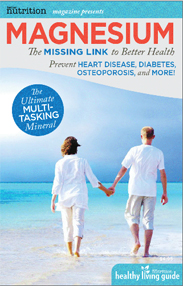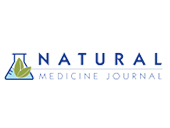Cholesterol Myths – Interview With Carolyn Dean, MD, ND
#1. Is cholesterol bad?
HDL Cholesterol is good. It’s the building block for all our hormones, Vitamin D and bile acids. It coats all the cells in the body with a fatty membrane, which is especially important for the fatty coating of neurons in the brain. It transports fat soluble vitamins A,D,E,K.
LDL cholesterol is considered the “bad” cholesterol because it contributes to plaque, a thick, hard deposit that can clog arteries and make them less flexible. This condition is known as atherosclerosis.
#2. Does smoking have any effect on cholesterol?
Yes, it does. Cigarette smoke oxidizes cholesterol to the LDL form which is a harmful form.
http://www.pace-cme.org/d/662/cigarette-smoking-negatively-affects-hdl-c-in-multiple-ways
Oxidized cholesterol damages blood vessels. Additionally, this entire process of oxidative degradation of fats (lipid peroxidation) occurs when the body is lacking sufficient magnesium stores.
#3. Are eggs bad? Do they raise cholesterol levels?
Not true. They are a very healthy source of protein and essential fats. Now, the Dietary
Guidelines Advisory Committee (DGAC) has done a complete about-face. They are finally
acknowledging what the science shows, which is that “cholesterol is not considered a
nutrient of concern for over consumption.”
http://articles.mercola.com/sites/articles/archive/2015/03/02/us-guidelines-dietary-cholesterol-limits.aspx
#4. Can exercise lower cholesterol?
Yes. But you shouldn’t just exercise. You should do a combination of diet, high fiber and exercise which is a healthy way to reduce cholesterol.
#5. If I have high cholesterol, will I need medication?
Not necessarily. Maybe for genetically high cholesterol but diet, fiber, exercise and magnesium will lower cholesterol. Not all forms of magnesium are easily absorbed. Magnesium citrate powder mixed in hot or cold water and sipped throughout the day is a highly absorbable form that is easy to take.
#6. Can you have high cholesterol if you are thin?
Thin people do tend to have lower cholesterol but some thin people can have a rare genetically high cholesterol condition.
#7. Does a diet without cholesterol lower it?
Not necessarily. Most of the cholesterol in the body is produced in the liver.
#8. Does consuming Omega-3 oils help?”
Yes. This nutrient can help lower cholesterol.
#9. Do antioxidants like green tea help fight cholesterol?
When cholesterol is high, it is often acting as an antioxidant, so if you take other antioxidants such as green tea or magnesium, you can take the pressure off your cholesterol, because then cholesterol doesn’t become elevated beyond it’s normal levels.
#10. Does Magnesium act like a statin?
A well-known magnesium proponent, Mildred Seeling, M.D., just before she died in 2004, wrote a fascinating paper with Andrea Rosanoff, Ph.D., showing that magnesium acts by the same mechanisms as statin drugs to lower cholesterol.1
Every metabolic activity in the body depends on enzymes. Making cholesterol, for example, requires a specific enzyme called HMG-CoA reductase. As it turns out, magnesium slows down this enzymatic reaction when it is present in sufficient quantities. HMG-CoA reductase is the same enzyme that statin drugs target and inhibit. The mechanisms are nearly the same; however, magnesium is the natural way that the body has evolved to control cholesterol when it reaches a certain level, whereas statin drugs are used to destroy the whole process.
This means that if sufficient magnesium is present in the body, cholesterol will be limited to its necessary functions—the production of hormones and the maintenance of membranes—
and will not be produced in excess.
It’s only in our present-day circumstances of magnesium deficient soil, little magnesium in processed foods, and excessive intake of calcium and calcium-rich foods without supplementation of magnesium that cholesterol has become elevated in the population. If there is not enough magnesium to limit the activity of the cholesterol-converting enzyme, we are bound to make more cholesterol than is needed.
The magnesium/cholesterol story gets even better. Magnesium is responsible for several other lipid-altering functions that are not even shared by statin drugs. Magnesium is necessary for the activity of an enzyme that lowers LDL, the “bad” cholesterol; it also lowers triglycerides and raises the “good” cholesterol, HDL. Another magnesium-dependent enzyme converts omega-3 and omega-6 essential fatty acids into prosta glandins, which are necessary for heart and overall health.
Seelig and Rosanoff conclude their paper by saying that it is well accepted that magnesium is a natural calcium channel blocker, and now we know it also acts like a natural statin. In their book The Magnesium Factor, Seelig and Rosanoff reported that eighteen human studies verified that magnesium supplements can have an extremely beneficial effect on lipids. In these studies, total cholesterol levels were reduced by 6 to 23 percent; LDL (bad) cholesterol were lowered by 10 to 18 percent; tryglycerides fell by 10 to 42 percent; and HDL (good) cholesterol rose by 4 to 11 percent. Furthermore, the studies showed that low magnesium levels are associated with higher levels of “bad” cholesterol and high magnesium levels indicate an increase in “good” cholesterol.
McCully was the first researcher, back in 1969, to identify a condition of increased levels of an amino acid, homocysteine, in the urine of patients with heart disease, which could be reversed with certain nutrients.2,3
Homocysteine is a normal by-product of protein digestion, which in elevated amounts causes the oxidization of cholesterol—and it is oxidized cholesterol that damages blood vessels. For certain individuals who lack specific enzymes for protein digestion, homocysteine can become a real problem. A healthy level of homocysteine is below 12 μmol/L. Homocysteine levels greater than 12 μmol/L are considered high, and when homocysteine is elevated in the cell, magnesium measures low. Twenty to 40 percent of the general population have elevated levels of homocysteine. Individuals with high levels have almost four times the risk of suffering a heart attack compared to people with normal levels.16 Elevated homocysteine is high on the list of risk factors for heart disease and serves as an even stronger marker than high cholesterol for heart disease and blood clotting disorders.5,6
The more relevant marker may be low magnesium since the major enzymes involved in homocysteine metabolism are magnesium-dependent.7 McCully blames too much protein in the diet for elevated homocysteine. However, when magnesium, vitamin B6, vitamin B12, and folic acid are deficient, the body is not able to properly digest protein. The B vitamins were readily available in the typical diet a hundred years ago; now that they’re absent from the diet, homocysteine becomes elevated and heart disease results.
When these metabolic nutrients are reintroduced through diet or supplements, the high homocysteine levels are reversed and the symptoms of heart disease diminish. Ongoing research confirms that B6, B12, and folic acid together with magnesium are necessary to prevent blood vessel damage induced by high levels of homocysteine in the blood.8 In short, the successful treatment of homocysteinuria relies on dietary changes that include B vitamins and magnesium.9,10,11 However, magnesium is often left out of the prescription for homocysteinuria in favor of the B vitamins—a common but serious error on the part of conventional medicine.
It must be remembered that high homocysteine is also a marker for all causes of mortality, which underscores that a deficiency in essential nutrients has a far-reaching effect on the body far beyond heart disease.12
Medical Disclaimer:
The ideas, procedures and suggestions contained in this article are not intended as a substitute for consulting with your physician. All matters regarding your physical health require medical supervision. Neither the author nor the publisher shall be liable or responsible for any loss, injury or damage allegedly arising from any information or suggestion in this article.
References:
1. Rosanoff A, Seelig MS, “Comparison of mechanism and functional effects of magnesium and statin pharmaceuticals.” J Am Coll Nutr, vol. 23, no. 5, pp. 501S–505S, 2004.
2. McCully KS, “Homocysteine, folate, vitamin B6, and cardiovascular disease.” JAMA, vol. 279, no. 5, pp. 392–393, 1998.
3. McCully KS, “Vascular pathology of homocysteinemia: implications for the pathogenesis of arteriosclerosis.” Am J Pathol, vol. 56, no. 1, pp. 111–128, 1969.
4. Eikelboom JW et al., “Preventive cardiology and therapeutics program.” Ann Intern Med, vol. 131, no. 5, pp. 363–375, 1999.
5. Boushey CJ et al., “A quantitative assessment of plasma homocysteine as a risk factor for vascular disease. Probable benefits of increasing folic acid intakes.” JAMA, vol. 274, no. 13, pp. 1049–1057, 1995.
6. Confalonieri M et al., “Heterozygosity for homocysteinuria: a detectable and reversible risk factor for pulmonary thromboembolism.” Monaldi Arch Chest Disease, vol. 50, no. 2, pp. 114–115, 1995.
7. Altura B, Altura B, “Magnesium: the forgotten mineral in cardiovascular health and disease.” A Gem Lecture at SUNY Downstate. Alumni Today, pp. 11–22, spring 2001.
8. Li W et al., “Extracellular magnesium regulates effects of vitamin B6, B12 and folate on homocysteinemia-induced depletion of intracellular free magnesium ions in canine cerebral vascular smooth muscle cells: possible relationship to [Ca2+]i, atherogenesis and stroke.” Neurosci Lett, vol. 274, no. 2, pp. 83–86, 1999.
9. Shamsuddin AM, “Inositol phosphates have novel anti-cancer function.” Journal of Nutrition, vol. 125 (suppl.), pp. 725S–732S, Review 1995.
10. Rowley KG et al., “Improvements in circulating cholesterol, antioxidants, and homocysteine after dietary intervention in an Australian Aboriginal community.” Am J Clin Nutr, vol. 74, no. 4, pp. 442–448, 2001.
11. Tice JA et al., “Cost-effectiveness of vitamin therapy to lower plasma homocysteine levels for the prevention of coronary heart disease: effect of grain fortification and beyond.” AMA, vol. 286, no. 8, pp. 936–943, 2001.
12. Vollset SE et al., “Plasma total homocysteine and cardiovascular and noncardiovascular mortality: the Hordaland Homocysteine Study.” Am J Clin Nutr, vol. 74, no. 1, pp. 130–136, 2001.
Newsletter
![]()

Want valuable information regarding the health benefits of magnesium, latest studies, expert interviews,videos and health tips? Enter your name and email address and you can start receiving valuable health information right away.
Featured On:








